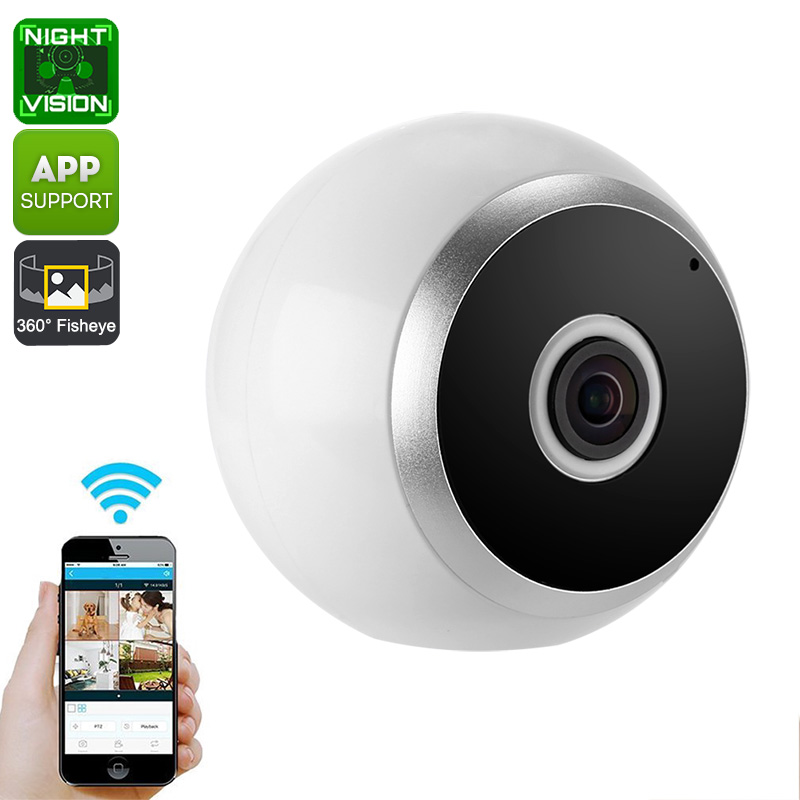

- Camera 360 degree install#
- Camera 360 degree update#
- Camera 360 degree software#
- Camera 360 degree series#
- Camera 360 degree download#
This is one of several potential methods to control the camera, so if you have a different preferred way (GPIO button, touch screen, etc) feel free to skip this step. What does a web server have to do with a 360 camera? Well, it can provide us with a simple way to remotely view and control our camera. Once everything was printed, I just added a couple dabs of hot glue to secure the camera and the lens.
Camera 360 degree download#
You can download and view my 3D printed files over at Thingiverse. Since I was firing up the 3D printer anyway, I decided to also design an integrated case that could easily be mounted on to a tripod.

To test it out, I simple used pieces of cardboard to keep it propped over the camera, but a more permanent solution was to 3D print a case for the camera that could support the panoramic lens on top of it. Now you should just have the round dome of the mirror and the lens, but how do we get it to fit on the camera? It's probably a good idea to put a little piece of tape over the lens hole so that you don't get any plastic pieces on the mirror. Then I smoothed out everything using some sandpaper. I did this using both really sharp shears and a dremel. The Kogeto Dot is intended to be used as an iPhone attachment, so it comes with a lot of extra plastic around the lens that needs to be trimmed off.
Camera 360 degree install#
Sudo apt-get install libavcodec-extra-(52|53|5x) We also want to install a couple of codecs so that we can easily view and convert our video later. It can be quite daunting if you're not used to installing things on linux, so I've given it it's own dedicated step. When it's through updating, we need to install SimpleCV.
Camera 360 degree update#
Then you'll want to open up a command prompt and update your computer by typing:īy the way, the default password is "raspberry". Once your computer has booted back up, you can now click on the "Wi-Fi" icon in the upper right and connect to your local wireless network. Click "OK" and then reboot your computer. Then under the "Interfaces" tab, make sure the "Camera" option is enabled. Under the "System" tab, click on "Expand Filesystem". The first two things you want to do is click on Menu > Preferences > Raspberry Pi Configuration. With the camera, mouse, keyboard, and monitor attached, plug in the power to start it up. When it's done, eject the Micro-SD card and insert it into the Pi. If you're using Windows, insert your SD card and then use the free Win32DiskImager program to burn the image to the SD card. You can download the newest version from here.Īfter it's downloaded, you can unzip the contents. In order to start it up, you first need to install the Raspbian operating system on a Micro-SD card. The newest Raspberry Pi 3 has built in wi-fi and bluetooth, but There are a few things you'll need to get it up and running: a second wi-fi adapter to use as a hotspot (later on), a power cable, a mouse and keyboard, a monitor, and a Micro-SD card. If you're not familiar with a Raspberry Pi, it's a $35 single-board computer that's about the size of a credit card. Since we'd need a camera that needs to also de-warp and process the video, I decided to go with a Raspberry Pi and the Raspberry Pi Camera.
Camera 360 degree software#
It's intended for iPhone cameras, but it uses proprietary software in order to view it, and the videos aren't compatible with Youtube. So technically, we can make a legitimate 360 video (that can be uploaded to Youtube) using a mirrored sphere and some software.įor the spherical mirror, I found this Kogeto Panoramic Camera for less than $15.
Camera 360 degree series#
And if this is done with a series of images, it can then be stitched into a video. So taking a picture from underneath one of these mirrors produces a 360 degree view of what's around you.īut how can that become a 360 degree video? Well, using some software, this spherical image can be unwrapped. Those types of mirrors are quite often seen mounted to the ceiling in hospitals so that workers can easily see what's around corners. One very promising method was using a spherical mirror. Seeing as how I don't have $700 to waste, I began searching for a cheaper DIY alternative. 360 degree video is the new hot trend, but when it comes to 360 degree video cameras, most rigs will cost you upwards of $700.


 0 kommentar(er)
0 kommentar(er)
